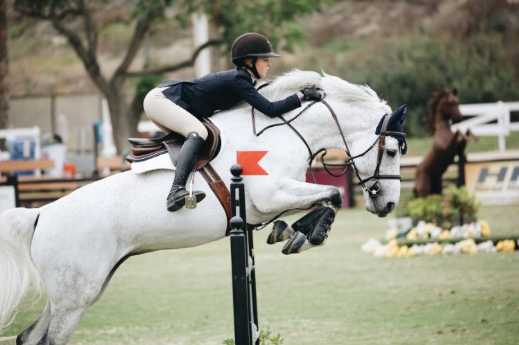
Image credit: WolfBlur / Pixabay
How to Select a Horse Breed
Selecting the right horse for you comes down to more than just a breed. A horse’s temperament can differ drastically from its breed’s typical behaviors and personalities. That said, selecting a horse breed based on its traits is the first step to narrowing down your choice of steed.
Here are some questions to explore to help you narrow down the best horse breed for you:
Why Are You Buying a Horse?
Consider why you are buying a horse. Is it for competition? For work? For company? For sport? The breed you select must suit your needs – and it’s important to remember that not all horse breeds are well suited for dressage, racing, or even ranch work.

Image credit: 3675284 / Pixabay
Will the Horse Be Around Kids?
When choosing a horse to bring home, selecting your desired temperament is critical, especially if you have children. Some horse breeds do not fare well with the antics of kids. If you expect your horse to handle visits from children, you’ll want to look for a breed known for its calm and adaptable nature.
What Size of Horse Do You Need?
The size of a horse does matter when it comes to keeping your horse comfortable. A horse does best when only carrying up to 20 percent of its body weight. Because of this, larger breeds work better for working tasks, taller and heavier riders, and handling physical stress.
Additionally, the horse’s height matters when it comes to keeping you comfortable and safe. The taller the horse, the harder the fall. Beginners should consider shorter horses (around 15 hands or less) if concerned about falls.
How Much Experience With Horses Do You Have?
The type of horse breed you select should reflect your experience with riding, training, and caring for horses. A beginner should steer towards easier-to-train and care-for horses like the American Quarter Horse or the Appaloosa. Individuals with more experience can explore spirited breeds like the Friesian or mustangs.
What Facilities Do You Have Available?
When selecting a horse breed, consider the kind of living arrangements and care facilities you have available. For energetic breeds like the Thoroughbred, you’ll need plenty of space to exercise the horse. For less hardy breeds like the Arabian, you’ll need shelter (like a barn or stable) for harsh weather.
The 10 Most Popular Horse Breeds
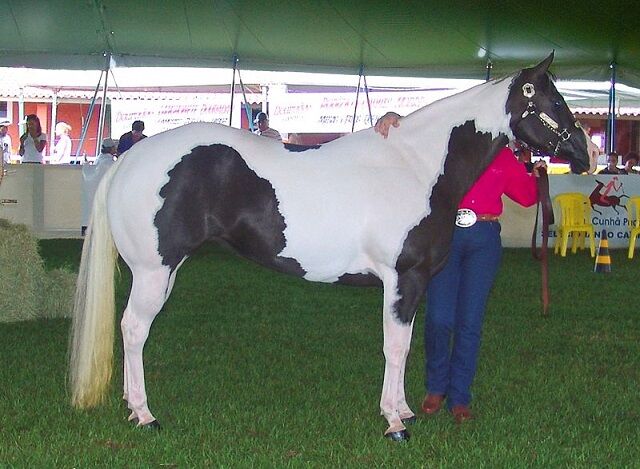
Image credit: CC BY 2.5
American Paint
You probably recognize the American Paint horse by its unique coat of white markings against a darker coat color. Paints can range in color from bay to blue roan, but all American Paint Horses have a distinct white patterned coat. Traits of the breed include a calm demeanor, easy trainability, speed, agility, and durability.
American Paints are an excellent decision for beginners or seasoned riders looking for a ranch horse or competing in events like barrel racing or combined driving. The Paint is a relatively hardy breed but does carry health risks of hyperkalemic periodic paralysis and lethal white horse syndrome.

By Лена – Own work, Public Domain
Andalusian
Andalusian horses descend from the steeds of Spanish and Iberian horses. They are a majestic breed known for their grace in dressage competitions – but they adapt well to hard work. The average Andalusian sits at just above 15 hands. It’s a relatively easy breed to train and known for its desire to please and adaptability.
Andalusians are excellent choices for riders seeking a mount for dressage. They don’t shy away from the occasional driving and handle pleasure riding quickly. Usually, Andalusians work well for all skill levels of riders.
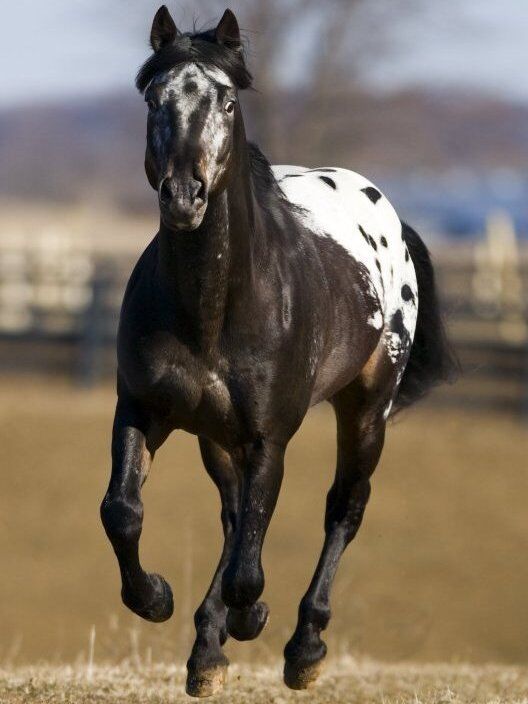
By Darrell Dodds (license held by Appaloosas) – Transferred from en.wikipedia.org [1]: 2006-10-18 04:24 . . Appaloosas, CC BY-SA 3.0
Appaloosa
Andalusian horses descend from the steeds of Spanish and Iberian horses. They are a majestic breed known for their grace in dressage competitions – but they adapt well to hard work. The average Andalusian sits at just above 15 hands. It’s a relatively easy breed to train and known for its desire to please and adaptability.
Appaloosa horses usually stand between 14 and 16 hands. They are a versatile breed, well suited for pleasure riding to the rodeo to ranch work. Appaloosa horses train quickly and develop loyalty with their owners – beginners and experienced riders will do well with the breed.

By Ealdgyth – Own work, CC BY-SA 3.0
Arabian
Arabians are known for their graceful appearance, but the breed is also exceptionally sturdy due to their ancestry as desert horses. They are relatively small for riding horses, standing at no more than 16 hands at most. Their durability and endurance make Arabians perfect for long-distance racing and working ranches.
Keep in mind that Arabians are only the best choice for beginners with access to experienced trainers or riders. This horse breed is spirited and stubborn, requiring a firm hand for adequate training and care.
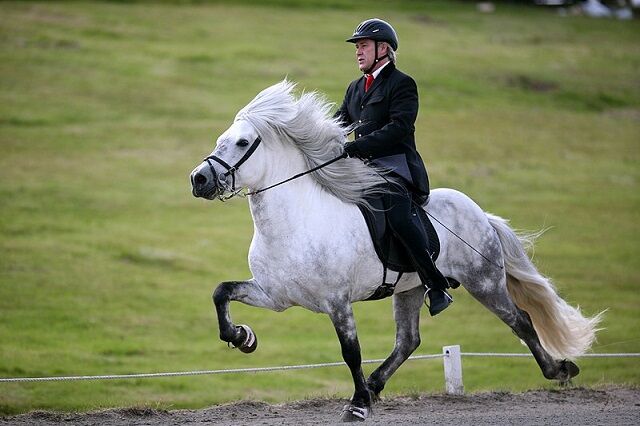
Image credit: By Dagur Brynjólfsson – originally posted to Flickr as 043 Sævar frá Stangarholti, CC BY-SA 2.0
Icelandic Horse
The Icelandic will fit your needs if you want a strong and durable horse. This stocky breed once helped Vikings on their war campaigns. Their small stature standing at around 13 to 14 hands, may surprise you, but looks can be deceiving. The Icelandic breed can easily carry fully grown adults and take on working tasks.
Icelandic horses have the perfect temperament for all levels of riders. They are more than willing to work, develop loyalty quickly with their owners, and handle themselves well around children. However, because of their selective breeding, Icelandic horses can be expensive to buy.
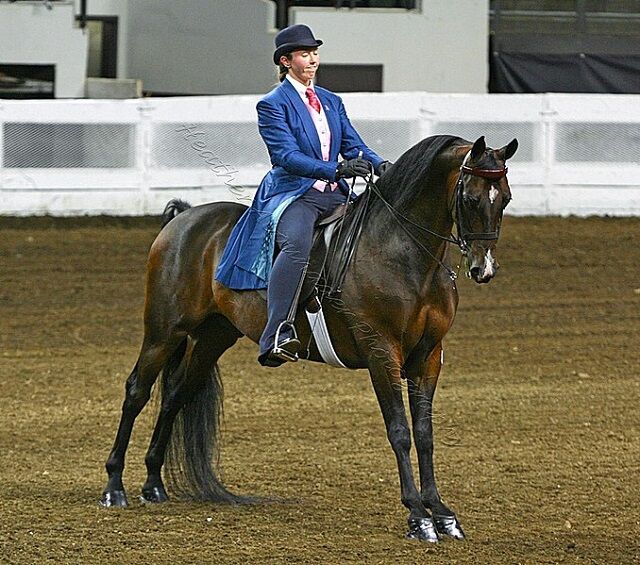
By Heather Moreton – Flickr: 2008 KY state Fair Morgan Horse Show, CC BY-SA 2.0
Morgan Horse
The Morgan Horse is an excellent choice if you’re looking for a dependable breed. This breed of steed is extroverted and loves meeting people – perfect for family ranches.
Morgan horses are an excellent choice for work or pleasure. They thrive in side saddle and trotting events as much as they do as ranch horses and transportation. Their easygoing demeanor makes them a great choice for beginners.
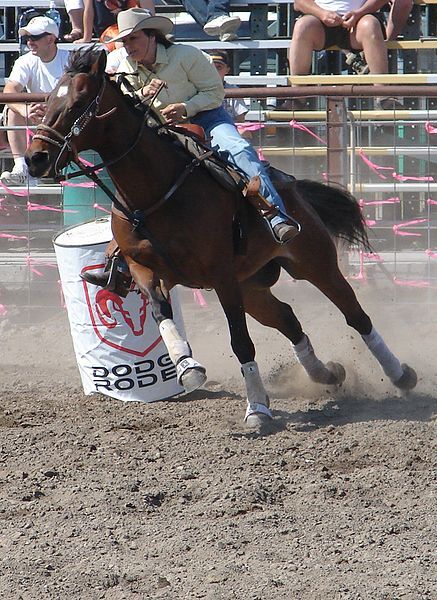
By Jamidwyer – Own work, CC BY-SA 2.0
American Quarter
The American Quarter Horse is an all-around good choice for riders seeking a steed for competition, work, or leisure. The breed draws its roots from Arabians and Mustangs, but despite its spirited ancestry, the Quarter Horse is easy to train and friendly.
Individuals looking for a horse to keep as a family pet will do well with a Quarter Horse. But don’t discount them – the breed is also beloved by the racing world.
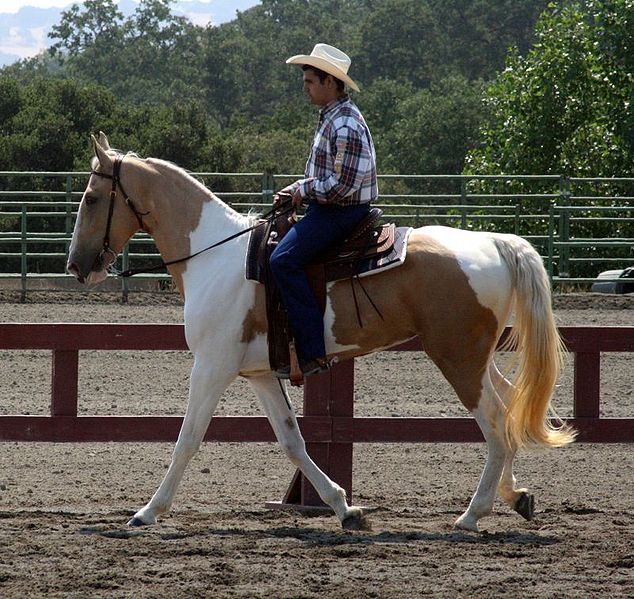
By Just chaos – originally posted to Flickr as Spotted Saddle Horse, CC BY 2.0
The Spotted Saddle Horse
If you need a calm and trainable horse, the Spotted Saddle breed will fit the bill. The breed is friendly by nature and adapts well to visitors, making it an excellent choice for families and beginner riders.
The Saddle Horse is best known for its comfortable ride. This horse breed is surefooted, making it perfect for driving and pleasure. Beginners and experts will find the Spotted Saddle Horse an excellent choice for their steed.

By Just chaos – originally posted to Flickr as Tennessee Walking Horse, CC BY 2.0
Tennessee Walker
The Tennessee Walker horse is a relatively new breed that originated in the U.S. around the 1900s. It stands between 14 and 17 hands tall. In addition to being sturdy, Tennesse Walkers are less prone to health issues and less expensive on feed bills.
Today, the Tennessee Walker breed has carved out a niche in the riding and tack worlds. However, the breed originated as working horses on ranches and still thrives in such work.

By Softeis – Own work, CC BY-SA 3.0
Thoroughbred
Thoroughbred horses have become the bread and butter of horse racing breeds. They can grow as tall as 17 hands and are solid and durable. You’ll occasionally see Thoroughbreds in dressage and driving on a ranch.
It’s important to know that Thoroughbreds are a spirited and athletic breed. Therefore, beginners may find training and exercising them a challenge. Thoroughbreds are popular, but they require ample room to exercise and a steady hand to train them.
Conclusion
The most popular horse breeds gained their followings from their distinctive traits, uses, and temperaments. You can find the best horse breed to suit your lifestyle and needs by measuring all three.


